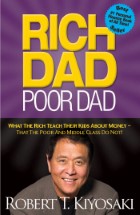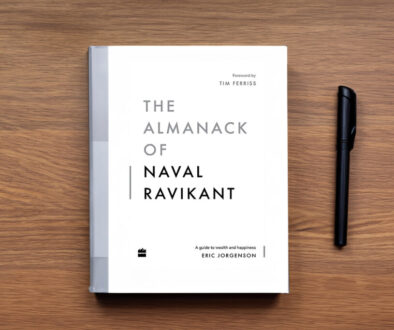Mastering Money: Summary of Rich Dad Poor Dad Book
The book Rich Dad Poor Dad by Robert Kiyosaki compares his two fathers – his educated but struggling “poor dad” and his wealthy, street-smart “rich dad”. This groundbreaking personal finance book explodes the myth that you need to earn a high income to become rich.
Kiyosaki lays out how the rich focus on acquiring income-generating assets instead of working for money their whole lives like the poor and middle class do. Rich Dad Poor Dad highlights the importance of financial literacy and convinced me to change how I think about money. This book summary will provide an overview of the key lessons in Rich Dad Poor Dad and how the book changed my financial outlook.
Introduction
When I first read Rich Dad Poor Dad, I was blown away by Robert Kiyosaki’s unique perspective on money and investing. Even though Kiyosaki wrote this book back in the 90s, the lessons on how to get out of the “rat race” and stop working for money are timeless.
Rich Dad Poor Dad really drills into your mind the importance of financial literacy. Understanding how money works is the key to building wealth. Kiyosaki uses personal stories and compares his “rich dad’s’ ‘ advice to his “poor dad’s’ ‘ advice to teach important concepts like the cashflow quadrant and how the rich make their money work for them.
While some of the investing concepts may be a bit advanced for beginners, Kiyosaki keeps the book engaging with his conversational writing style. He uses lots of examples and diagrams to explain ideas like corporations and taxes. I also appreciate how he incorporates real estate and business into his investing philosophy.
The Book in 3 Sentences
- Your financial intelligence – how you manage money – is more important than how much money you make. Developing financial intelligence starts with changing your mindset about money and wealth.
- The rich acquire assets – things that earn them money. The middle class and poor acquire liabilities they think are assets.
- You need both financial knowledge and financial wisdom to become truly wealthy. Knowledge comes from formal education but wisdom comes from real-world experience.
Impressions
When I first read Rich Dad Poor Dad, I was blown away by Robert Kiyosaki’s unique perspective on money and investing. Even though Kiyosaki wrote this book back in the 90s, the lessons on how to get out of the “rat race” and stop working for money are timeless.
Rich Dad Poor Dad really drills into your mind the importance of financial literacy. Understanding how money works is the key to building wealth. Kiyosaki uses personal stories and compares his “rich dad’s’ ‘ advice to his “poor dad’s’ ‘ advice to teach important concepts like the cashflow quadrant and how the rich make their money work for them.
While some of the investing concepts may be a bit advanced for beginners, Kiyosaki keeps the book engaging with his conversational writing style. He uses lots of examples and diagrams to explain ideas like corporations and taxes. I also appreciate how he incorporates real estate and business into his investing philosophy.
Who Should Read It?
I think anyone who feels stuck in the cycle of working for money should read Rich Dad Poor Dad. Whether you’re living paycheck to paycheck or already have money in the stock market, this book will make you rethink what you’ve been taught about the relationship between earning, saving, and investing.
People who want to retire comfortably, generate passive income, and achieve financial freedom can benefit greatly from reading Rich Dad Poor Dad. Parents who want to teach their kids how to be smart with money will find the book very useful too.
Some practical experience with investing is helpful before reading this, but Kiyosaki keeps the concepts pretty accessible for most readers. If you’re willing to open your mind, you can gain a lot from Rich Dad Poor Dad regardless of your financial situation.
How the Book Changed Me
Reading Rich Dad Poor Dad gave me an entirely new perspective on money, business, and investing. Here are some key lessons that had a big impact on how I now think about wealth:
- Focus on assets not liabilities. Rich people acquire income-generating assets while middle class and poor people spend their money on liabilities.
- Become financially literate. Take the time to learn money management, accounting, investing, markets, and the law. Financial intelligence is vital for wealth.
- Mind your own business. Gain control by starting a business and investing rather than staying dependent on a paycheck.
- Make money work for you. Passive income and appreciation from assets grow your wealth through capital gains and cash flow.
- Retire rich, not poor. Figure out the investing game early so you don’t have to rely only on savings accounts and social security.
My Top 3 Quotes
“The poor and the middle class work for money. The rich have money to work for them.”
This quote sums up a key difference in mindset between the rich and everyone else. The rich focus on acquiring income-generating assets. Everyone else just works for money without accumulating assets.
“Financial struggle is often the direct result of people working all their lives for money…and then having to keep up with the Joneses.”
It’s so true that we get caught in the rat race of working just to pay the bills and keep consuming. The book made me conscious of this cycle many people are stuck in.
“Intelligence solves problems and produces money. Money without financial intelligence is money soon gone.”
This quote captured me because I’ve seen so many lottery winners go broke. Just getting money doesn’t make you rich if you lack the intelligence to manage it well.
Summary
Chapter 1: The Rich Don’t Work for Money
The first lesson Robert learned from his rich dad was that the rich focus on accumulating assets – things that earn money – while everyone else focuses only on their paychecks and career.
Robert’s poor dad was very educated with a PhD and held a senior position in government. But he struggled financially and was obsessed with job security. He advised Robert to work hard in school so he could get a secure, high-paying job with benefits.
Rich dad dropped out of school in the eighth grade but went on to become one of the wealthiest men in Hawaii. He stressed to Robert the need to build assets that provide passive income instead of relying on a job.
This was an important lesson for Robert. He realized his highly educated poor dad worked for money his whole life and had little to show for it. His rich but uneducated dad acquired assets early on and his money worked for him, making him financially independent.
Chapter 2: Why Teach Financial Literacy?
In Chapter 2, Robert discusses why financial education is never taught in school. His rich dad believed this education is critical for anyone to build real wealth and gain control over their financial future. Without financial knowledge, you’ll always struggle financially even with a high income from your job.
Robert realized from his two dads that it’s not how much money you make that matters. What matters is how much money you keep and how to make your money grow. His poor dad generated a good salary as an educator but he didn’t know how to manage it. His rich dad was not as highly paid but he knew how to use money to buy income-producing assets.
Financial intelligence comes down to understanding cash flow and knowing the difference between an asset that puts money in your pocket versus a liability that takes money from your pocket. For most people, their house is their only asset. The rich focus on acquiring assets that have cash flow like businesses, real estate, stocks, and bonds.
Chapter 3: Mind Your Own Business
In this chapter, Robert compares his two dads’ opposing attitudes towards being an employee versus owning your own business.
According to his poor dad, the path to success is getting a good education to find a stable, high-paying job and climbing the corporate ladder. Don’t take risks but invest in your career by acquiring more qualifications, skills and degrees.
In contrast, rich dad believed in developing your own business. He hammered home to Robert the importance of not spending your life working to make other people rich. Take control over your income by owning businesses that generate money for you, not just having a job that provides a paycheck.
Rich dad encouraged Robert to use his day job to learn skills that would help him start his own business later. Don’t just work for the next pay raise. Learn everything about that industry, meet useful contacts, gain expertise – then leverage it all later in your own entrepreneurial venture.
Chapter 4: The History of Taxes and the Power of Corporations
This chapter reveals how the rich utilize corporations to minimize their tax liability and keep more of the money they earn.
The poor and middle class work as individuals paying progressively higher taxes as they earn more. They have no knowledge about corporations and believe you must work hard to make money.
The rich use the corporate structure to their advantage. By setting up a corporation, they can legally reduce their tax exposure, keeping more of their income to acquire more assets and invest. A corporation also protects their personal assets from lawsuits related to their business.
Robert’s rich dad preached repeatedly that the main reason the rich get richer is that they know how to use corporate entities to minimize taxes. The poor and middle class allow the government to take more and more of their hard earned money, handicapping their ability to acquire assets and grow their wealth.
Chapter 5: The Rich Invent Money
While most people work for money, the rich make money work for them, according to Robert’s rich dad.
The poor and middle class acquire liabilities they believe are assets like houses and cars. But assets put money in your pocket, while liabilities take money out.
The rich focus on acquiring assets – and they often use creative financing to accelerate asset acquisition. They purchase rental real estate by using the rent to cover the mortgage payment so none of their own money is required up front.
Robert gives an example of finding a rundown foreclosed home selling for very cheap. He takes a loan to buy it, fixes it up, rents it out, and now he has an income-producing asset. The rent pays the mortgage and generates cash flow without any additional money needed from Robert’s pocket.
As their assets grow, the rich focus on buying even bigger assets that throw off more cash flow, allowing them to grow richer quickly. The poor and middle class stick to steady jobs, buying liabilities and not investing in assets to make their money work for them.
Chapter 6: Work to Learn – Don’t Work for Money
In this chapter, Robert elaborates on why you should focus on learning, not just earning money at a job.
Robert’s rich dad told him not to simply work hard to make more money. While actively working, also educate yourself and develop skills that will help you grow assets and create passive income later.
Rich dad said too many people are overly focused on the paycheck and benefits their job provides. They neglect to sharpen their financial intelligence and acquire hard assets.
So they spend 40 years working hard but have no assets at the end. All they can count on is Social Security or a company pension. They are trained only to work for money, not have money work for them.
The road to wealth involves working, learning AND acquiring assets. Don’t just blindly work for dollars without continually improving your financial knowledge to grow your assets.
Chapter 7: Overcoming Obstacles
Everyone faces mental and emotional obstacles that stop them from taking the leap to start businesses and acquire assets. Robert covers the common fears that hold most people back from pursuing the path of his rich dad.
Robert realized from a young age that overcoming self-doubt was the critical factor determining financial success. Confidence in your own abilities inspires you to take risks and start acquiring assets to become an entrepreneur and investor.
Other obstacles include fear of losing money, fear of failure, being too much of a perfectionist, greed, arrogance, and laziness. The difference is wealthy people force themselves to confront these fears and emotions and start actively investing anyway. They don’t let roadblocks stop their momentum.
Chapter 8: Getting Started
This chapter gives practical tips for those ready to get started acquiring assets.
Robert emphasizes the need to take action. Go to investing seminars, take educating classes, start small by putting money in stocks and mutual funds. But most importantly – take action. Don’t just read about it.
When looking for real estate, shop around aggressively, making lots of offers well below asking price to find a bargain. Leverage creative financing to minimize your own capital needed. Build connections with brokers who can tip you off to great deals.
For investing outside real estate, take time to build your financial intelligence before putting in large sums. Paper assets like stocks require research and expertise to earn high returns. Start small as you learn.
Chapter 9: Still Want More? Here Are Some To Do’s
The book concludes with Robert reiterating that your choice in life is to either work hard for money or have money work hard for you.
Our educational system focuses only on preparing youth to get jobs and be employees. So shift your mindset from loyal diligent employee to savvy entrepreneur and investor.
Teach your kids financial intelligence young. Break the cycle of relying on paychecks and borrowing for expenses. Build enough assets to generate passive income so you aren’t dependent on your job.
Surround yourself with mentors and advisors who are playing the game at a high level. Hire financial planners who have skill and experience building wealth.
Keep increasing your financial knowledge. Read books, attend courses. Learn accounting, investing, markets, law. Becoming a successful entrepreneur/investor requires this self-education.
Conclusion
Rich Dad Poor Dad shook up my ideas about what it really takes to become wealthy and achieve financial independence. It all starts with educating yourself about money and changing your mindset.
Don’t just blindly follow the advice of working hard to get a good job. Real power and freedom comes from acquiring assets that work for you. A job alone will never make you rich. You need to become a savvy entrepreneur and investor to build serious wealth.
The key point is that it’s not how much money you earn from your job that matters. What matters is how much money you keep and control. That only happens when you build assets and become financially intelligent in managing your money.
This book was an inspiring call to action. We all face doubts and fears around branching out beyond our jobs. But we have the power to push past these obstacles. By taking small steps to start educating ourselves about financial markets and start acquiring assets, we put ourselves on the path to greater prosperity and freedom.


